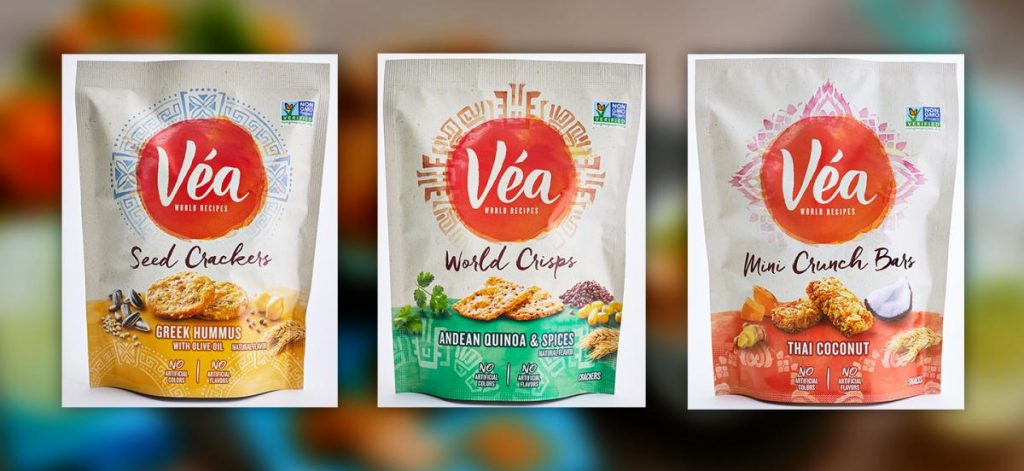This rapidly growing demand for well-being snacks is the biggest trend that global food companies need to adjust to. We spoke with Christine McGrath, Chief Well-being Sustainability, Public & Government Affairs Officer, and Robin Hargrove, EVP, Research Development, Quality & Innovation at Mondelēz International, on how the company is adapting to this trend. With brands like Oreo, belVita, Cadbury Dairy Milk, Milka and Trident, Mondelēz International is a world leader in biscuits, chocolate, gum and candy and a key stakeholder in the well-being area.
CGF: What does Well-being mean for Mondelēz International?
Christine McGrath: Well-being is a key power shift for a company like ours and an important part of our growth strategy. If you think about it, the well-being snack segment is a $160 billion opportunity, split with 60 percent in developed and 40 percent in developing markets. That’s a quite significant market! Our ambition is to be a global leader in well-being snacks. To get there, we’re focusing on renovating our core portfolio as well as expanding our well-being brands by focusing our innovation on great tasting well-being snacks.
Rob Hargrove: Everything we do starts with the consumer. We know people want to eat better but they also want their sweet treat. It’s important to enjoy treats, in balance, and consumers view this as part of their well-being. So we take a holistic approach to well-being: on the one hand, we’re looking to reduce certain nutrients like sodium and saturated fat or adding other beneficial ingredients such as whole grains. At the same time, we’re working to simplify our ingredient lines and innovate to meet new needs. For us, well-being means more than just looking at nutritional benefits. It’s looking at the whole entire product – from how it’s packaged to how it’s made.
CGF: How is your company adapting to meet consumer demand for well-being snacks?
Christine McGrath: Our company’s success is rooted in helping people snack in balance and enjoy life. So we’re addressing areas that are important to consumers and where we can have the greatest impact.
First, we’re committed to growing our well-being brands at twice the average rate of our portfolio. Our 10 well-being brands meet stricter nutrition profiles and offer specific consumer benefits such as simpler, recognizable ingredients, allergen-friendly and organic. We’ll expand those brands through geographic expansion and ongoing marketing investment.
Second, we’re contemporizing and renovating our core Power Brands – our biggest sellers – to make them more relevant by providing simpler, cleaner ingredient lines and improved nutrition. For instance, we now offer organic and non-GMO varieties of our Triscuit crackers in the U.S, as part of our promise to work to meet consumer preferences.
Third, we’ll continue to inspire consumers to snack mindfully by offering more portion control products, individually wrapped options under 200 calories. We view portion control as a helpful way for consumers to enjoy the treats they love and stay in balance. In fact, since 2012, we’ve grown the portion-control options within our portfolio by 35 percent.
Finally, we are also working with other food companies and retailers through The Consumer Goods Forum. Here, we are able to discuss collaborative ways to address some of today’s leading health and well-being challenges and find innovative solutions that can be implemented industry-wide.
What role does innovation play?
Rob Hargrove: Innovation plays a critical role in our well-being strategy. We’re dedicating 70 percent of our new product innovations to well-being platforms. To win in that space, our portfolio must be strongly aligned with fast-growing snacking areas – across geographies, consumer need states and sales channels. So our Research, Development, Quality & Innovation team is leading the extensive renovation of our portfolio as well as a robust pipeline of new offerings.
We’re also investing in a global network of Technical Centers to help drive innovation. When fully completed, it will consist of nine large, advantaged hub locations in which we’re focusing the vast majority of our technical resources. Many of these locations also have consumer science and packaging labs. Having breadth across key markets maintains our rapid access to excellent talent pools, and changing consumer needs and trends.
It sounds like you’re doing renovation and innovation at the same time. How does that work?
Rob Hargrove: 2017 is actually our biggest year ever in the well-being space with unprecedented innovation and renovation of our portfolio. This means that, on one hand, we’re renovating our core portfolio to contemporize our brands and our portfolio. And on the other hand, we’re innovating to better meet the needs of our consumers. With a focus on both our well-being and biggest selling Power Brands, we expect our impact to be greater as we’ll be able to reach more people with brands they purchase more frequently.
On the product innovation side, we’re focused on answering new consumer needs. Our latest innovation, Véa, is a perfect illustration of this approach. Launched this summer in the U.S., Véa is a new wholesome savory biscuit brand designed to drive incremental growth in the savory cracker segment. The recipes are on-trend in every way: no artificial ingredients, colors or flavors, no trans fats, Non GMO Project Verified. And we worked with chefs around the world to design these new snacks with authentic regional flavors, from Thai Coconut to Peruvian Sweet Potato or Greek Hummus. The Véa portfolio will also include innovative forms – from crunch bars and world crisps to seed crackers. We believe Véa answers an unmet snacking need for consumers looking for wholesome snacking options with authentic flavors.
Similarly, we see expansion opportunities with our Ritz Crisp & Thins innovation we launched in the United Kingdom in 2016. These are oven-baked and they contain 50 percent less fat than the leading fried potato chips. Launched in 2016, Ritz Crisp & Thins has been a major contributor to overall salty snack category growth. We’ve now expanded Ritz Crisp & Thins to continental Europe and the U.S.
Many of your Power Brands are well established and iconic brands. How are you renovating your portfolio?
Rob Hargrove: On the Power Brand renovation front, we’ve been taking out some ingredients consumers don’t like such as saturated fat, trans fat, sugar, artificial ingredients and adding others that they prefer such as whole grains. For example, we’ve recently launched belVita Protein soft biscuits in the US to address consumers who are looking for high-protein, well-being snacking options. This new product offers 10 grams of protein but no artificial flavors and no High-Fructose Corn Syrup. We’re also offering Tang beverages and Trident gum that have no artificial colors or flavors. We’ve reduced sodium across our Tuc crackers by 20% as well as lowered saturated fat content in our Oreo cookies sold across Europe.
But, wait, how do snacks such as Oreo cookies and Milka chocolate fit into this strategy?
Christine McGrath: Consumers tell us they like their sweet treats and view that as part of their well-being. Experts also agree that snacking can be enjoyed as part of a healthy lifestyle. This said, we’re always looking for ways to make our treats more permissible, through smaller pack sizes, new formats, textures and flavors. Oreo Thins is a great example: they have become a global success by offering consumers a lighter treat with the same great taste as the original.
Another area where we can help consumers is to empower them to make informed, mindful decisions for themselves and their families. And we can help by offering clear information about our snacks and adding front-of-pack labeling.
How do you measure progress?
Rob Hargrove: We’ll be measuring our progress throughout the year, and reporting publicly on the progress we’ve made in growing our well-being brands, as well as renovation efforts of our Power Brands. We have nutrition and ingredient criteria in place that we will use to assess renovations. We’re already starting from a strong foundation, with tremendous progress we’ve made since 2013. For example, we’ve already increased whole grains by 25 percent across our global portfolio and achieved significant sodium and saturated fat reductions. We also participate annually in the CGF’s Health & Wellness measurement and reporting initiative, where we join with other CGF members to report on how we’re moving forwards on topics like product formulation and consumer information.
What’s next?
Christine McGrath: As we look ahead, we see an opportunity to build upon our achievements and evolve our portfolio to meet consumers’ growing expectations for snacks that offer good nutrition, as well as have fewer, more authentic ingredients.
We’re evolving in the right way. We’re better aligned with what consumers are looking for from their snacks; focused on improving where the demand from consumers is the greatest and shifting our investments behind the brands that can help us make the biggest difference. This will in turn have a positive impact on consumers’ overall well-being.
This post was with written by the CGF’s Health & Wellness team, with the support of:
Rob Hargrove
Christine McGrath
Mondelēz International



